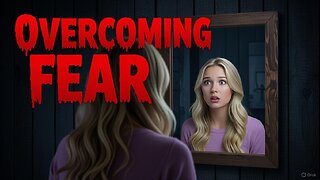Premium Only Content

The Sage's Jester: Alan Watts on Wisdom's Wild Dance
paypal https://paypal.me/MysterySchool33
Cash App https://cash.app/$MysterySchool33
Patreon https://www.patreon.com/MysterySchool
Donate Bitcoin bc1qmlsugweesgmmxwrvdxly0wgll6uxdl68td5gyl
Mystery School Store. https://mysteryschool33.com
Patreon https://www.patreon.com/MysterySchool
Twitch. https://www.twitch.tv/mystery_school_33
Rumble https://rumble.com/c/MysterySchool
The Sage’s Jester: Alan Watts on Wisdom’s Wild DanceAlan Watts, the charismatic 20th-century philosopher, raconteur, and interpreter of Eastern wisdom for Western minds, left an indelible mark on spiritual thought with his playful yet profound lectures. Born in 1915 in Chislehurst, England, Watts transitioned from an Anglican upbringing to become a Zen enthusiast, Taoist sage, and cultural bridge, blending wit with metaphysical insight. His lecture, reframed here as The Sage’s Jester: Alan Watts on Wisdom’s Wild Dance, originally titled “The Fool and the Sage,” encapsulates his genius for revealing profound truths through paradox. Delivered in the late 1960s during one of his many talks at the Esalen Institute in Big Sur, California, this lecture—later transcribed and published in various anthologies—explores the archetype of the fool as the shadow side of the sage, a figure whose apparent absurdity masks divine wisdom. This 3000-word exploration delves into the lecture’s themes, structure, and enduring relevance, weaving in Watts’ philosophical influences, cultural context, and practical applications for the modern seeker.The Sage’s Jester is not a book but a lecture, typically lasting 50 minutes in audio form, though its ideas have been expanded in posthumous collections like The Essential Lectures of Alan Watts (1983). The lecture’s core premise is that wisdom, far from being a solemn or rigid state, emerges through the spontaneous, often foolish play of life’s cosmic dance. Watts draws from Zen koans, Taoist parables, and Western trickster myths to argue that the fool—uninhibited, unpretentious, and unbound by societal norms—is the sage’s true face, stripped of ego’s pretensions. The title The Sage’s Jester better captures this dynamic: the jester, with his bells and capers, embodies the sage’s liberation, dancing on the edge of absurdity to reveal the universe’s inherent joy. This essay unpacks the lecture’s three implicit phases—The Fool’s Mask, The Dance of Duality, and The Wisdom of Play—while situating Watts’ insights within his broader oeuvre and the countercultural zeitgeist of the 1960s.The Fool’s Mask: Uncovering the Divine ClownThe lecture opens with Watts’ characteristic chuckle, a sound that disarms listeners and sets the stage for his subversive wisdom. “The fool,” he begins, “is not just the village idiot but the one who dares to be himself, unapologetically, in a world obsessed with masks.” Drawing from the Tarot’s Fool card—depicting a carefree wanderer teetering on a cliff—Watts introduces the fool as a universal archetype, appearing in Shakespeare’s jesters, Zen’s eccentric monks, and the Taoist wanderer Chuang Tzu. The fool, he argues, is society’s mirror, exposing the absurdity of rigid conventions through humor and defiance.Watts roots this idea in his studies of Zen Buddhism, which he encountered in his 20s through D.T. Suzuki’s writings. In Zen, the enlightened master often behaves like a fool—think of the monk who burns wooden Buddhas for warmth or answers profound questions with nonsense. Watts recounts a favorite koan about a master who, when asked about the meaning of life, hands the questioner a broken sandal and walks away laughing. “The fool doesn’t solve the mystery,” Watts explains, “he dissolves it.” This dissolution is key: the fool’s mask conceals not ignorance but freedom from the need to know, a state Watts equates with satori, sudden awakening.Culturally, Watts spoke to a 1960s audience hungry for liberation from post-war conformity. The Esalen Institute, where he often lectured, was a crucible for the human potential movement, attracting hippies, intellectuals, and seekers disillusioned with materialism. The fool resonated as a countercultural hero—think Bob Dylan’s cryptic lyrics or Ken Kesey’s Merry Pranksters, figures who, like Watts’ jester, challenged norms through playful rebellion. Watts connects this to the medieval court jester, who could mock the king without fear, embodying truth in jest. “The sage wears the fool’s motley,” he quips, “because only in folly can he speak what the wise dare not.”Practically, Watts invites listeners to embrace their inner fool through small acts of spontaneity: sing in public, dance without rhythm, or ask a childlike question in a serious meeting. These acts, he suggests, crack the ego’s facade, revealing the authentic self. He cites Chuang Tzu’s parable of the useless tree, which survives because it’s too crooked for lumber, as a metaphor for the fool’s invincibility. By refusing utility, the fool sidesteps society’s grinding wheel, embodying wu-wei—Taoist non-action. This section, roughly the first 15 minutes of the lecture, sets up the fool not as a failure but as a sage in disguise, preparing listeners for the deeper paradox.The Dance of Duality: Sage and Fool as OneThe lecture’s middle phase shifts to the interplay between fool and sage, which Watts frames as a cosmic dance of opposites. “The sage without the fool is a statue; the fool without the sage is a drunk,” he says, his voice lilting with irony. Here, he leans heavily on Taoist philosophy, particularly the Tao Te Ching’s yin-yang interplay, where opposites—light and dark, wisdom and folly—are not enemies but partners. The sage’s wisdom, Watts argues, is not a rejection of folly but its embrace, just as the fool’s antics are grounded in an intuitive grasp of life’s flow.Watts illustrates this with the Zen story of Bankei, a 17th-century master who, when accused of irreverence, responds by eating during a sermon—a foolish act that silences critics by exposing their rigidity. “The sage knows he’s a fool,” Watts explains, “and the fool, in his heart, knows he’s a sage.” This paradox aligns with Watts’ broader philosophy, seen in works like The Wisdom of Insecurity (1951), where he argues that certainty is illusion, and true understanding arises from embracing life’s flux. The fool-sage dynamic mirrors this: the sage’s gravitas is hollow without the fool’s levity, and the fool’s chaos is aimless without the sage’s insight.Watts also draws on Western traditions, referencing the Greek daimon—the inner genius Socrates followed, which often led him to act foolishly in Athens’ eyes. He parallels this with the Native American trickster Coyote, whose blunders teach profound lessons. These cross-cultural threads, woven with Watts’ erudition, reflect his time as a scholar-priest in the 1940s American Zen community, where he synthesized East and West. The 1960s context amplifies this: as Vietnam War protests and psychedelic exploration challenged dualities of right and wrong, Watts’ listeners craved a philosophy that reconciled opposites. The fool-sage archetype offered a way to navigate this turbulence, neither rejecting society nor submitting to it.To embody this dance, Watts proposes a meditative exercise inspired by Zen: sit quietly and observe thoughts as if they were clouds, neither grasping nor rejecting them. “Let the fool in you babble,” he advises, “and the sage in you listen.” This practice, akin to zazen (seated meditation), fosters non-judgmental awareness, where thoughts—foolish or wise—float without fixation. He also suggests role-playing: spend a day as the fool, speaking bluntly or acting impulsively, then reflect as the sage, noting what truths emerge. This section, spanning roughly 20 minutes, is the lecture’s philosophical heart, urging listeners to see duality as a rhythm, not a conflict.Watts’ delivery here is electric, his British accent infused with a Californian drawl, punctuated by pauses that let the paradox sink in. He avoids dogma, instead using humor—like his quip about a sage who trips on his robe only to laugh at his own pomp—to keep the audience engaged. This phase bridges the personal and universal, showing how the fool-sage dynamic operates within the psyche and the cosmos, setting the stage for the lecture’s climactic vision.The Wisdom of Play: Embracing the Cosmic JestThe final phase of The Sage’s Jester elevates the fool-sage interplay into a cosmic celebration, where wisdom manifests as play. Watts introduces the Hindu concept of lila, the divine play of creation, where the universe exists not for purpose but for delight. “The fool is God’s jester,” he declares, “and the sage is God chuckling at his own jest.” This idea, drawn from Vedanta and Watts’ studies with Indian scholars like Swami Prabhavananda, frames existence as a divine game, where the fool’s antics and the sage’s insights are two notes in the same melody.Watts recounts the story of Krishna, the playful god who dances with milkmaids, juxtaposing it with the Zen master Hakuin’s childlike riddles. Both figures, he argues, reveal that enlightenment is not ascetic withdrawal but joyful participation in life’s absurdity. “The sage doesn’t sit on a mountain,” Watts teases, “he’s down in the market, haggling with a grin.” This resonates with his 1960s audience, many of whom sought spirituality not in monasteries but in communal experiments like Woodstock or Haight-Ashbury’s free-spirited ethos.To ground this, Watts explores maya—the illusion of separateness—as the stage for the cosmic jest. The fool, unaware of maya, stumbles through life; the sage, seeing through it, plays along knowingly. Watts connects this to quantum physics, a topic he explored in later works like Tao of Physics (1975). He likens the fool to particles bumbling unpredictably, the sage to the wave-like unity beneath. “Reality is a dance of both,” he says, presciently echoing modern theories of wave-particle duality. This scientific nod, delivered with poetic flair, thrilled his Esalen audience, many of whom were fascinated by the intersection of mysticism and science.Practically, Watts offers the “Dance of the Self,” a visualization where one imagines life as a stage, with oneself as both actor (fool) and audience (sage). “Play your role fully,” he urges, “but never forget you’re also in the wings, laughing.” This exercise, rooted in Advaita Vedanta’s non-dual witness consciousness, encourages living with passion while maintaining detachment. He also suggests embracing synchronicities—those “meaningful coincidences” Jung described—as the universe’s winks, where the fool’s chaos reveals the sage’s order.The lecture closes with a call to live lightly: “Wisdom is not heavy; it’s the feather that tickles the soul awake.” Watts’ voice softens, almost conspiratorial, as he shares a personal anecdote about spilling wine at a formal dinner and laughing it off, earning the room’s affection. This moment, he says, was his own fool-sage epiphany: by embracing the blunder, he found connection. The audience, often a mix of beatniks and academics, would have erupted in applause, moved by his vulnerability and wisdom.Themes and Legacy: The Eternal DanceThe Sage’s Jester distills Watts’ perennial themes: the unity of opposites, the liberation of play, and the dissolution of ego through humor. It echoes his broader works, like The Book: On the Taboo Against Knowing Who You Are (1966), where he dismantles the illusion of a separate self, and The Joyous Cosmology (1962), which celebrates psychedelic glimpses of unity. The lecture’s cross-cultural scope—spanning Zen, Taoism, Hinduism, and Western myth—reflects Watts’ role as a cultural synthesizer, making esoteric traditions accessible to a Western audience grappling with existential angst.In the 1960s context, the lecture spoke to a generation rejecting rigid hierarchies for fluid, authentic expression. The fool-sage archetype resonated with figures like Timothy Leary, whose “turn on, tune in, drop out” echoed Watts’ call to play outside society’s script. Today, its relevance endures in mindfulness movements, where teachers like Jon Kabat-Zinn echo Watts’ non-judgmental awareness, and in comedy-philosophy podcasts like The Duncan Trussell Family Hour, which channel his playful profundity.Critics might note the lecture’s lack of structure—Watts rambles, as was his style—but this mirrors the fool’s spontaneity, making the delivery itself a teaching. Enthusiasts, meanwhile, cherish its accessibility: no prior knowledge of Zen or Taoism is needed to grasp its invitation to live lightly. The lecture’s practical exercises—spontaneous acts, cloud-watching meditation, role-playing—offer tangible ways to embody its wisdom, making it a bridge from theory to practice.Cultural and Personal ImpactWatts’ personal journey informs the lecture’s authenticity. His transition from Episcopal priest to Zen scholar, coupled with his embrace of California’s counterculture, gave him a unique vantage point. His struggles with alcoholism and personal relationships, candidly referenced in later writings, lend depth to his fool-sage persona: he lived the paradox, stumbling and laughing. This vulnerability, paired with his erudition, made him a beloved figure, his voice—preserved in recordings like those on the Alan Watts Organization’s archives—a time capsule of 1960s optimism.The lecture’s impact ripples through modern spirituality. Its emphasis on play aligns with positive psychology’s focus on flow states, while its non-dual perspective informs teachers like Eckhart Tolle. In a world of polarized debates and digital overload, Watts’ call to embrace folly as wisdom offers a balm, urging us to laugh at our seriousness and dance with life’s uncertainty.Conclusion: The Jester’s Last LaughThe Sage’s Jester: Alan Watts on Wisdom’s Wild Dance is a microcosm of Watts’ philosophy: life is a game, and wisdom lies in playing it fully, foolishly, and freely. Through the fool-sage archetype, Watts dismantles the myth of enlightenment as a dour destination, revealing it as a joyful journey. The lecture’s three phases—unmasking the fool, dancing with duality, and embracing cosmic play—guide listeners from intellectual curiosity to lived experience. Its blend of humor, paradox, and practical exercises makes it a timeless invitation to awaken through laughter.Watts’ voice, with its blend of British charm and cosmic mischief, lingers like a koan: “The fool trips, the sage laughs, and the universe applauds.” To engage with this lecture is to join the dance, to become both jester and sage, twirling in the wild, wise rhythm of existence. In a 2025 world of AI-driven distractions and existential questions, Watts’ message remains a beacon: wisdom is not found in answers, but in the joyous absurdity of asking.
-
 1:23:44
1:23:44
Alan Watts Remastered
25 days agoAlan Watts, Overcoming Fear
243 -
 LIVE
LIVE
TimcastIRL
1 hour agoTrump To Deploy National Guard To Chicago, Federal TAKEOVER Begins | Timcast IRL
27,137 watching -
 1:26:00
1:26:00
Glenn Greenwald
7 hours agoNick Fuentes On Censorship, Charlie Kirk's Assassination, Trump's Foreign Policy, Israel/Gaza, the Future of the GOP, and More | SYSTEM UPDATE #523
49.9K186 -
 LIVE
LIVE
Akademiks
1 hour agonba youngboy live show.
879 watching -
 LIVE
LIVE
The Quartering
49 minutes agoThey Just Stopped Another Attack, Trump Defeats Youtube, Hasan PIker Meltdown & More
1,682 watching -

Dr Disrespect
10 hours ago🔴LIVE - DR DISRESPECT - BABY STEPS - TO THE TIPPITY TOP
164K15 -
 LIVE
LIVE
Drew Hernandez
7 hours agoTRUMP'S NEW GAZA PEACE PLAN & NETANYAHU LAUNCHES NEW SOCIAL MEDIA OP
849 watching -
 LIVE
LIVE
FreshandFit
7 hours agoMoney Monday Call-In Show w/ Steve From Accounting
1,544 watching -
 3:07:28
3:07:28
Nikko Ortiz
4 hours agoArena Breakout Better Than Tarkov? - Rumble LIVE
19.3K1 -
 35:44
35:44
MattMorseTV
2 hours ago $6.03 earned🔴Schumer just WALKED INTO Trump's TRAP.🔴
17.7K47